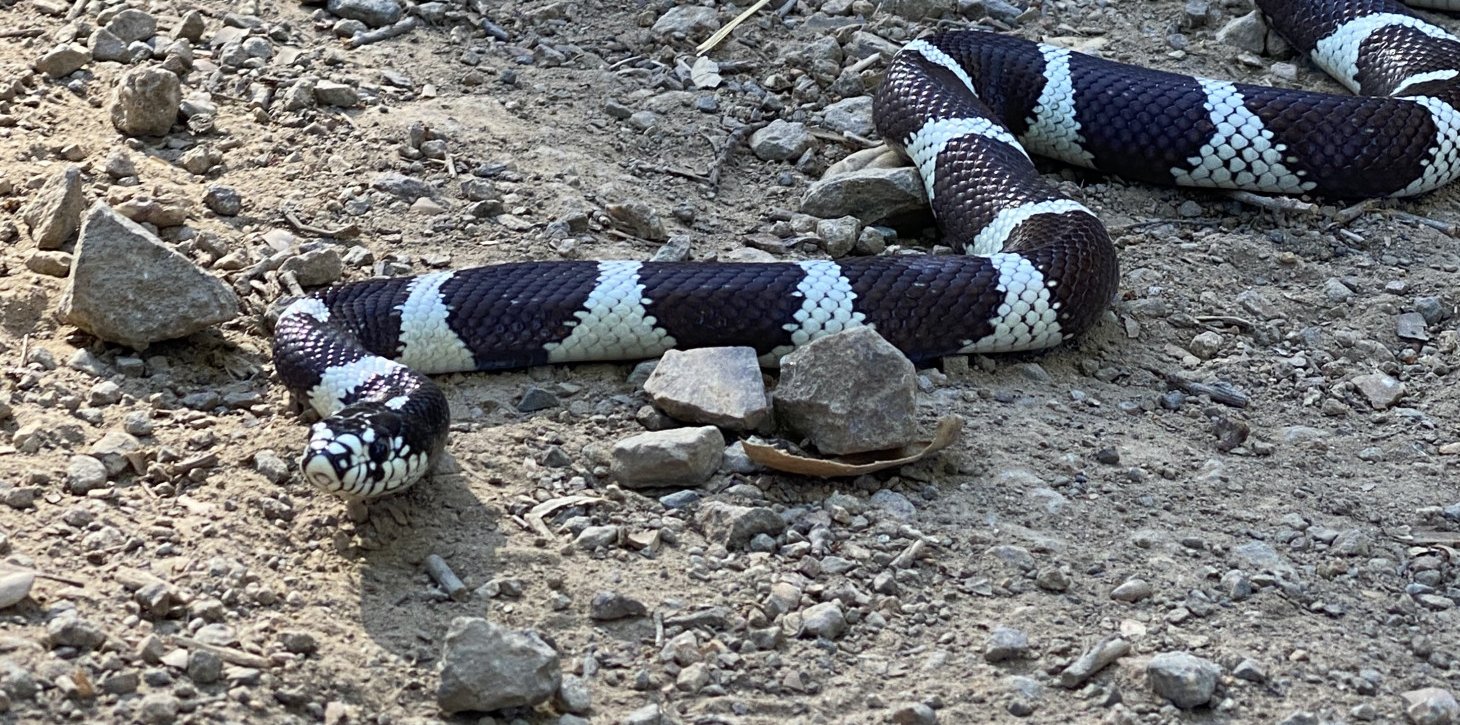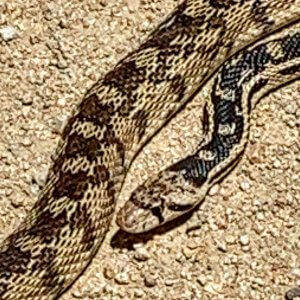
Creature Feature: cool snakes at China Camp
Our resident critter-whisperer shares fascinating facts about the park’s snake species.
As a child growing up in the Midwest, I was fascinated by the snakes I’d find in the surrounding fields and woods. I saw such encounters as fortunate, not fearsome.

So I was intrigued to learn what happened when a jogger at China Camp spotted a snake slithering for cover under a trailside log. The jogger used her phone to record a short video of the snake, and shared it with a friend who volunteers with our trail maintenance crew. Both were convinced they were watching a Northern Pacific rattlesnake slip under the log. I took a closer look at the video. No danger here. It was another one of the park’s common and important snake species, a Pacific gopher snake.
China Camp does indeed have resident rattlesnakes, and a recent study suggests that because of our warming climate, we should anticipate a growing population of Marin County’s only poisonous snake. Nevertheless, visitors hiking, jogging, or cycling in the park are much more likely to encounter a gopher snake, which mimics the rattler’s coloration and behavior in order to dissuade attacks by predators. Harmless to humans, the slim and sizable gopher snake, which typically grows to five feet or more compared to three feet for a stouter rattler, plays an important role in keeping the park’s rodent populations in check.
More cool serpents in a host of habitats
Other snakes occupy their own ecological niches in the park. My favorite snake species that I sometimes spy at China Camp is the California kingsnake (pictured at the top of this article), with brilliant alternating bands of deep brown or black and pale yellow or white. Like the slightly larger gopher snake, the kingsnake has adapted to a variety of the park’s habitats. Its diet includes small mammals and reptiles—even rattlesnakes—which truly makes the kingsnake “king.”
Other common snakes in the park include the Western yellow-bellied racer and California striped racer (also known as a whip snake), both of which are shy, slim, mid-size snakes most often observed as a rustle in grassy meadows. The same is generally true of the California red-sided garter snake, though it is somewhat more adaptable, with habitat ranging from grasslands to wetter habitats.
Some of the park’s smallest snakes prefer a damp, covered environment, and therefore are not frequently seen by visitors on the trails. This is true of the diminutive sharp-tailed snake, with its characteristic ends-like-a-spike tail, and of the easily-identified Pacific ring-necked snake (by the reddish-orange shade of its namesake collar).
Take care and leave snakes alone
As a trail maintenance volunteer, I am frequently called upon to move organic materials that are on and near park trails. I have learned to assume that something is living underneath whatever it is that needs to be moved, and to exercise caution when doing so, for both my sake and for that of anything living underneath. When I do find a reptile, amphibian, or invertebrate, I make sure my gloved hands carefully transfer it to similar habitat in a safer location.
That’s not to say that I don’t have a healthy respect for dangerous reptiles. I learned my lesson the hard way while rock hunting in the southeastern U.S. some years ago. I put my unprotected hand into a niche that held a copperhead snake and suffered the painful consequences.
Even so, I look forward to my first encounter with a rattlesnake at China Camp. My plan when that day comes, and my suggestion to others in a similar situation, will be to observe the snake from a safe distance. (As a rule of thumb, rattlers can strike from a distance up to two-thirds their body length). Then I’ll wait for the rattler to move off on its own, before thanking my lucky stars at my great good fortune for seeing this beautiful reptile.
For more tips on telling rattlers and gopher snakes apart, read this Bay Nature article.—by Kevin Smead, FOCC volunteer

